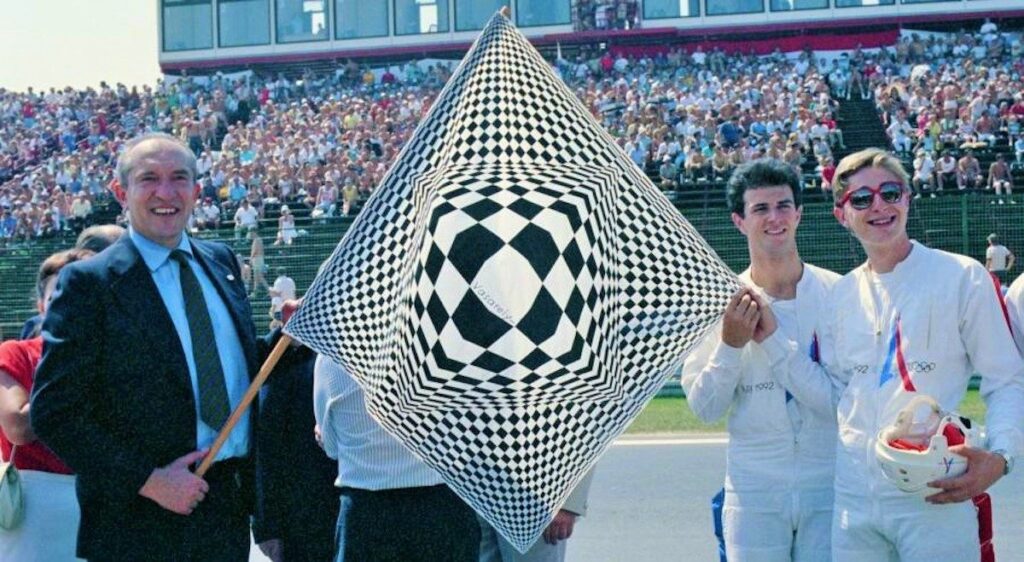
Op-artist Victor Vasarely made a psychedelic chequered flag for the inaugural Hungarian Grand Prix in 1986. It was delivered to the F1 grid by French paratroopers and later lost. Thirty years later a replica flag was donated to the race organizers by the artist’s grandson, Pierre.
Victor Vasarely
Victor Vasarely (originally Vásárhelyi Győző) was born in Pécs, South-West Hungary in 1906. He moved to France in the 1930s and later became famous as a leading exponent of op-art (short for optical art, a style of art that uses optical illusions). In the 1970s, Vasarely was tasked with redesigning the iconic diamond logo of Renault. His three-dimensional design with angular lines was used for more than 20 years. In the latter part of this life, Vasarely became a frequent visitor to his native country and established two museums in his home city of Pécs and in Budapest.

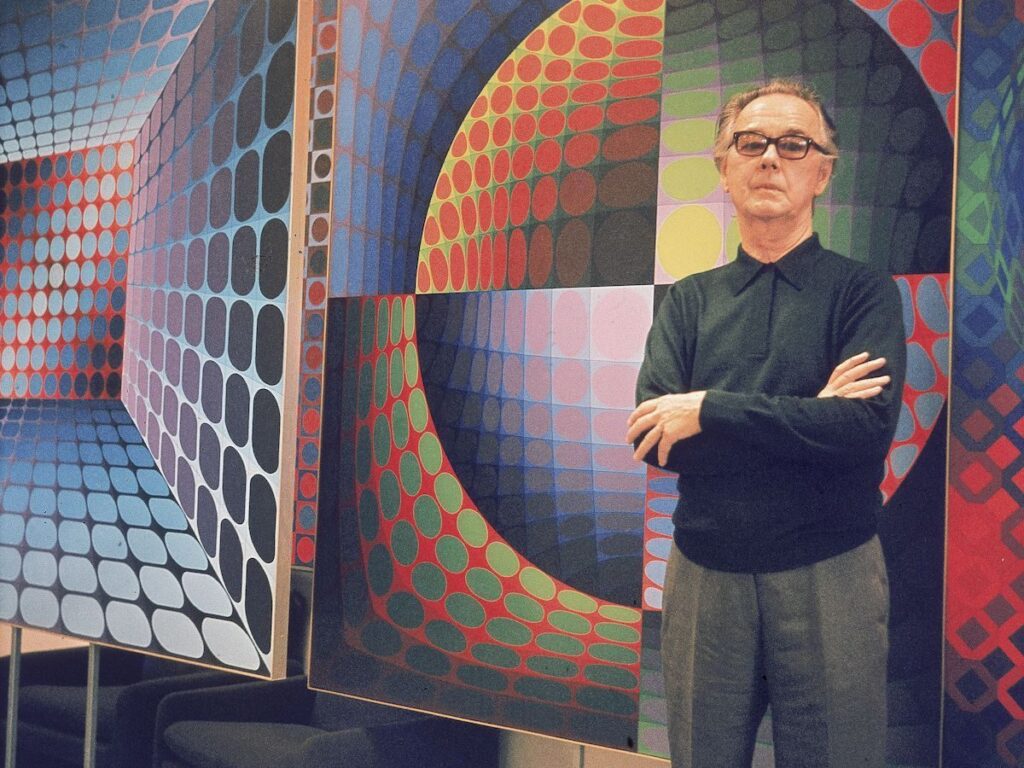
The French Connection
When Hungary hosted the first Formula 1 race behind the Iron Curtain in 1986, Vasarely designed a special chequered flag for the inaugural event on August 10. The flag was presented to the race organizers as a gift from the mayor of Paris, Jacques Chirac, who later became president of France.
During the pre-race ceremony at the Hungaroring, three French paratroopers landed on the main straight of the new circuit and presented the flag. Sadly, a more conventional chequered flag was used at the end of the race!
The iconic flag was later kept in the office of the president of the Hungarian Automobile Club, Tibor Balogh, who had signed the original contract with Bernie Ecclestone to bring Formula 1 to Hungary in 1985.
Over the years, however, the flag went missing. When we were preparing for the 30th anniversary of the Hungarian Grand Prix in 2016, I suggested that we use the original Vasarely flag. But as I discovered, it was nowhere to be found.

The Original Design
Luckily, I had developed a good relationship with Vasarely’s grandson, Pierre, who is the head of the Vasarely Foundation in Aix-en-Provence. I told him about the missing flag and he immediately offered a helping hand. He sent over the original design from his grandfather’s archive in France and it was no problem to get a new one made!
READ MORE: When Formula 1 Ventured Behind the Iron Curtain

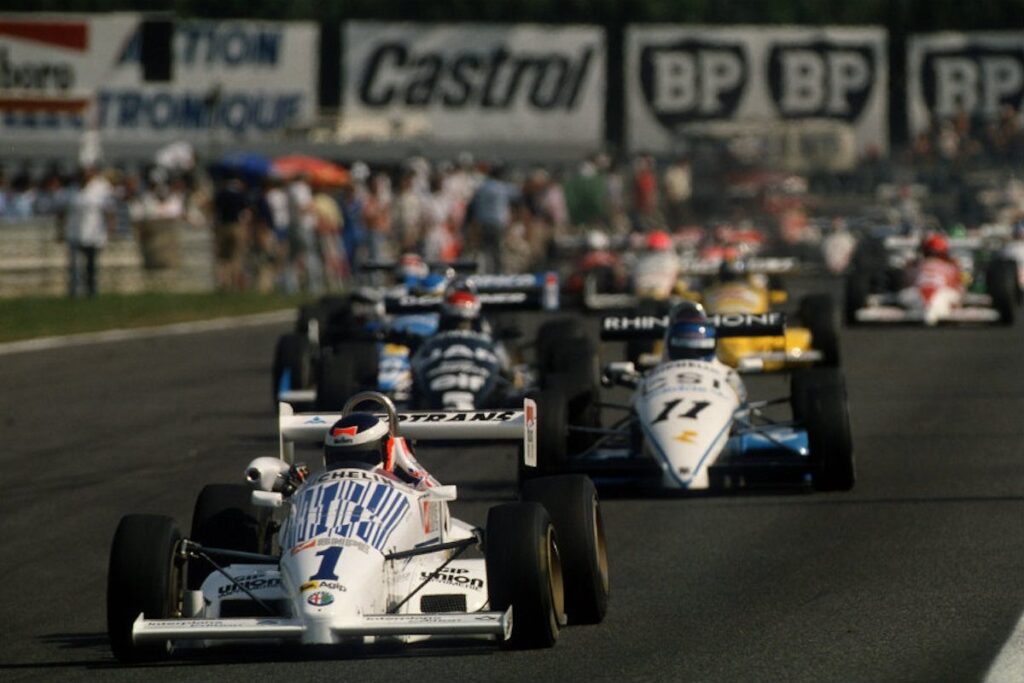
Jean Alesi
Meanwhile, I also learned that Jean Alesi, who hails from Avignon, had been sponsored by Vasarely during his Formula 3 days. Alesi fondly remember the late artist: “We met a few times. I attended some memorable dinners with the maestro. He was very kind towards me, though he liked telling me stories about his conquests, which always made me feel embarrassed.”
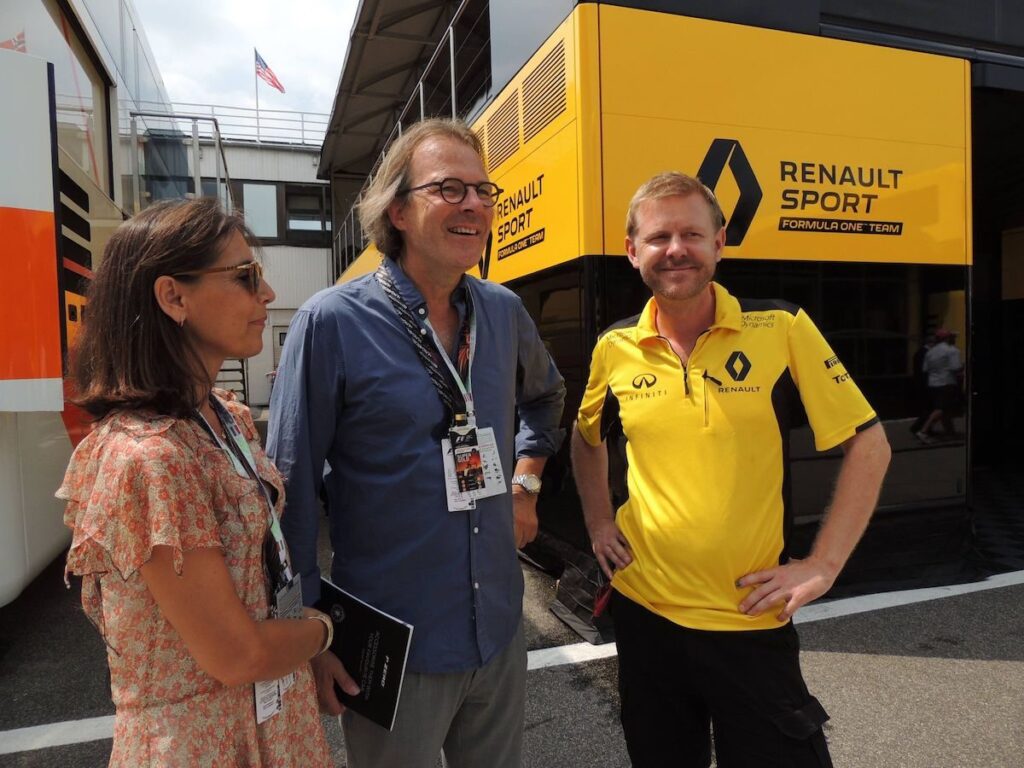
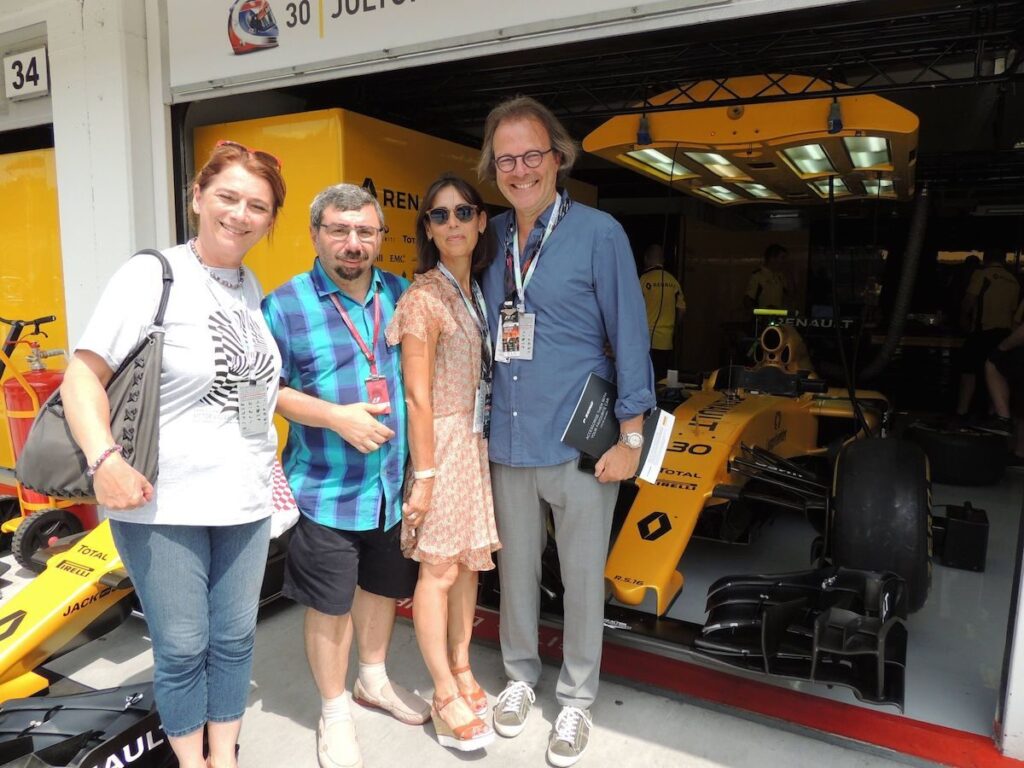
30th Anniversary
On the weekend of the 2016 Hungarian Grand Prix, Pierre Vasarely and his wife Caroline were invited to the Paddock at the Hungaroring, where together with Alesi they presented the newly created Vasarely chequered flag to the organizers of the race. It was also signed by all the drivers and team bosses after the drivers’ parade. During the weekend, track workers also wore a t-shirt incorporating the flag’s design.
Pierre Vasarely really enjoyed his weekend of Formula 1 and we even had the chance to spend a few minutes in the Renault garage. It was a truly memorable day!



I must admit, I’m quite fascinated by the juxtaposition of the avant-garde Op Art movement with the high-octane world of Formula 1 racing. And to have this unlikely pairing take place at a race behind the Iron Curtain? My curiosity is well and truly piqued.
I have many questions though. What was the impetus for this fusion of art and sport? How did the artists and racing teams collaborate (if at all)? And perhaps most importantly, what was the reception like from both the art world and the motorsport enthusiasts?